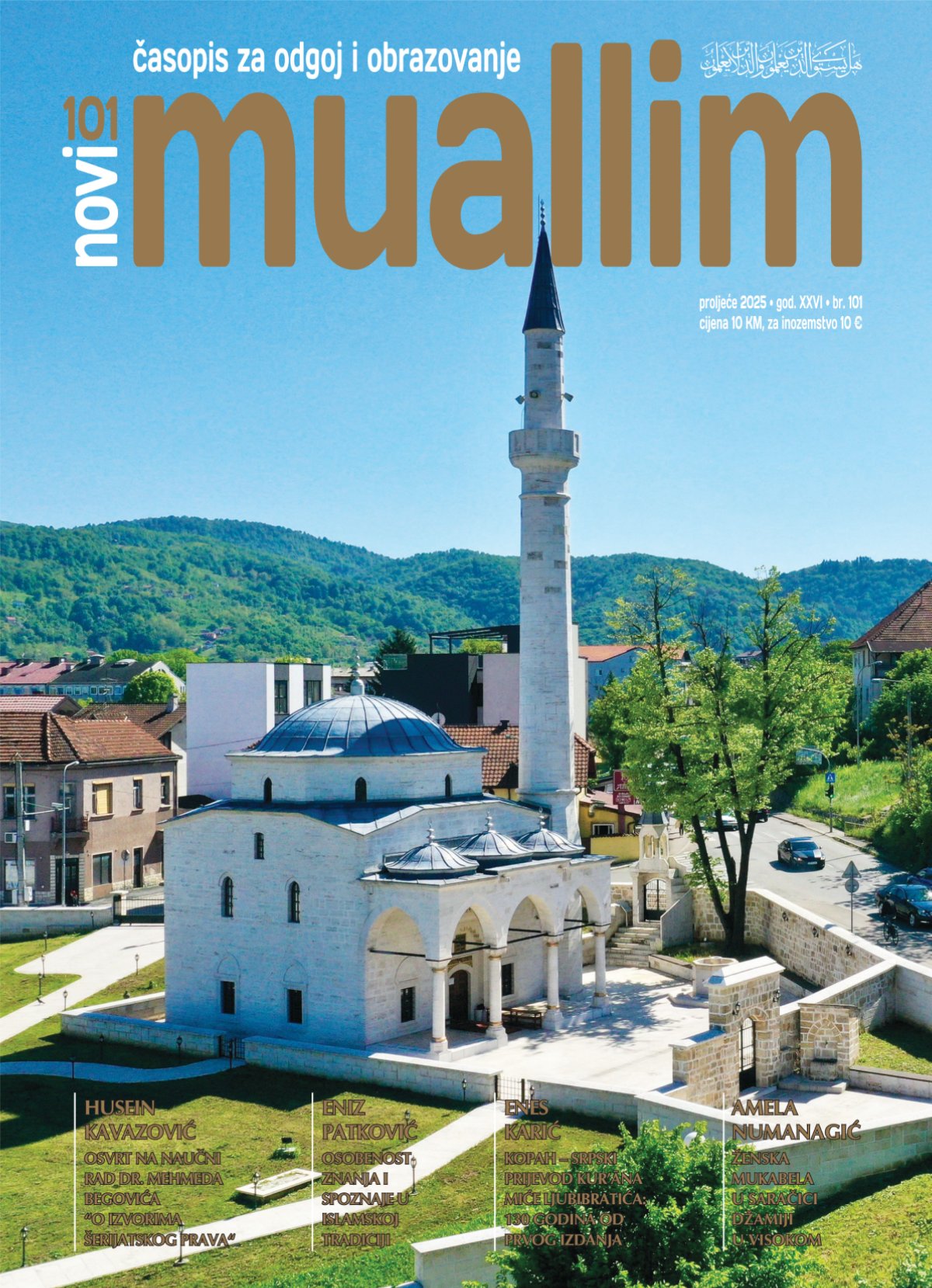The spiritual dimension of the Islamic traditional art of tazhib A review of the Mushaf by Fadil-pasha Šerifović
DOI:
https://doi.org/10.26340/muallim.v26i101.2146Keywords:
the Qur’an, tazhib, floral motives, Gazi Husrev-bey library, Mushaf by Fadil-pasha ŠerifovićAbstract
UDK 28-23:091.3=411.21"17"
929 Šerifović F.
The technique of illumination, tazhib, reflects the love for learning and books. Tazhib artists had to understand the context of a book before they could adorn and embellish it appropriately, and precision and skill were achieved through diligence and commitment to their work. Inclination to the beauty and love that resides within a human being is a gift from the Almighty God. The Quran was copied, adorned, and illuminated for centuries. Those who engage in the art of illuminating the Qur’an often believe it is a way of expressing one’s piety. Everything in Islamic art is a reflection and a symbol of the entire existence. Art is creating the beauty, the beauty which human senses and mind can perceive and understand, and the artist on that path decked with rises and falls is, actually, on the path towards his Creator; he is creating a piece of art that represents for him an everlasting bond with God. The author here presents a brief review of development and the significance of the art of illumination, with a highlight on the motives used in the illuminated Mushaf by Fadil-pasha Šerifović preserved in the Gazi Husrev-bey library in Sarajevo.
Downloads
Published
How to Cite
Issue
Section
License

This work is licensed under a Creative Commons Attribution 4.0 International License.
Naknada:
a. Časopis ne naplaćuje naknadu za obradu članaka (APC) i naknadu za podnošenje članaka.
Autori koji objavljuju u ovom časopisu pristaju na sljedeće uvijete:
- Autori zadržavaju autorska prava i pružaju časopisu pravo prvog objavljivanja, pri čemu će rad jednu godinu po objavljivanju biti podložan licenci Creative Commons imenovanje koja omogućuje drugima da dijele rad uz uvijet navođenja autorstva i izvornog objavljivanja u ovom časopisu.
- Autori mogu izraditi zasebne, ugovorne aranžmane za ne-ekskluzivnu distribuciju rada objavljenog u časopisu (npr. postavljanje u institucionalni repozitorij ili objavljivanje u knjizi), uz navođenje da je rad izvorno objavljen u ovom časopisu.


